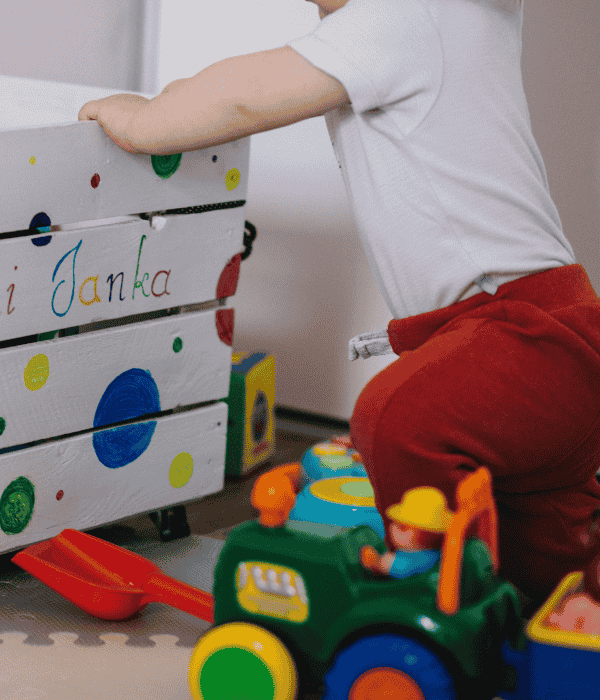Taking care of toddlers isn’t for the faint of heart. One needs generous amounts of patience and dedication at this stage since this is when a kid’s brain is developing rapidly, all while dealing with their limited communication skills and their early grasp of emotional regulation, which often lead to tantrums.
Positive behavior support (PBS) can be a highly effective strategy at this point. Its primary aim is to understand why toddlers act the way that they do and equip them with skills so they can act more appropriately. Read on as we discuss the different ways to use PBS in order to address different behavioral challenges and be able to raise kids who have self-control and high emotional intelligence.
Read more :
- 5 Parenting Tips to Help Your Little One Become a Positive Individual
- 5 Positive Parenting Techniques for Young Children
1. Communicate Clearly and Positively
When dealing with toddlers, it’s important to talk with clarity and strive to foster an open and respectful communication.
Part of this is positive scripting, such as using “do” statements. For instance, say, “Let’s clean up your toys,” instead of, “Don’t make a mess,” or, “The food stays on the plate,” over, “Don’t throw away your food.” It’s also ideal to employ “I” statements instead of pinning the blame on the child. For example, say, “I can’t concentrate on my work when you’re talking so loudly, ” instead of, “You’re yelling too much inside this house.”
It’s also a must to speak slowly so the toddler can understand the message you’re trying to convey. This helps avoid information overload, which might overwhelm their young mind. Moreover, listening to them intently while getting down to their level is one way to make sure they feel heard.
Apart from clear and positive communication, there are other support strategies that also lead to lasting behavioral outcomes. One can check out reputable online resources that discuss them in detail or continue reading this discussion.
2. Validate Their Emotions
Every kid has their own heart and mind. So, it’s important to make them feel that their thoughts and emotions matter. But this doesn’t mean tolerating your child’s behavior although it’s wrong or using validation out of pity or to stop a tantrum. Validate when it’s right and necessary.
Never see their emotions from your viewpoint as you might unintentionally minimize their feelings. Acknowledge what they’re going through and avoid making them feel like it’s not a big deal. If they’re upset about something, such as not getting the ice cream flavor they want, don’t say, “Stop crying, it’s just an ice cream.” Instead, you may say, “I understand that it’s frustrating to not get what you want, but it’s the only flavor they’ve got right now.”
Also, don’t be tempted to fix things immediately after validating their feelings. You don’t need to solve the problem; just recognize their emotions.
3. Tweak the Environment
PBS believes that a toddler’s misbehavior is a mere reaction to an environment that doesn’t match their developmental needs. That said, carry out some tweaks on their surroundings to promote positive behavior.
Safety should be a top priority here. Childproof the environment by locking cabinets and covering outlets. Also, make sure fragile and dangerous items like sharp objects and glass bottles are out of reach. You can also arrange the furniture to eliminate large open spaces that pave the way to areas where they’re not supposed to go. All this allows them to explore their surroundings danger-free.
Next, create zones that bring out their positive behavior. You can have one for reading, playing, or painting. This way, your child will know what they’re expected to do in those different areas. Want to teach them independence? There has to be enough toy supplies that they can easily grab, giving them full control over what they want to play with at any point in time.
Toddlers have a short attention span. You have to keep them interested in these areas. One way to do that is to swap themes every once in a while. You may have different bins, each one containing toys matching a particular theme. You can switch things every week so they won’t feel bored as they’ll always have something to look forward to experiencing.

4. Create a Routine
Having a routine is one of those behavioral strategies that can remove anxiety from a toddler’s mind. The sense of predictability it offers makes them feel safer and more secure, plus it encourages cooperation from a child who always wants things to go their way. A routine also helps them transition smoothly from one activity to another, avoiding tantrums.
How do you go about it? Visual schedules always come in handy. Create a photo chart that shows the order of activities for the day. Toddlers are visual learners, remember. It’s also important to set non-negotiable points, such as wake and sleeping times and meal schedules to give the routine some sort of stability.
The activities should be well-balanced. There should be an equal number of stimulating tasks, as well as moments where they need to relax and calm down. This way, their energy levels are properly regulated. Clear warnings said in advance are as important in this routine for a smoother transition. Make sure to properly verbalize that they’re about to change tasks in a few minutes.
But the most important part is to involve your toddler in planning this routine. They need to have a say on what activities to include. Allowing them to choose the toy they can play with at a particular time, for instance, gives them some sense of ownership.
5. Properly Respond to Challenging Behaviors
Addressing challenging behaviors properly isn’t a walk in the park but it’s necessary. Punishment isn’t the way to go. It’s understanding the root cause then teaching the child the appropriate way to face a particular situation.
Traditionally, a child who did something bad, like hitting a playmate, would be isolated as their punishment. But a more effective tactic would be to have a quiet time with them to help them calm down. Next, talk to them in a logical way, making them fully understand that every action leads to a certain outcome. You may say, “Since something hurtful happened while you’re playing, it’s time to go home for now.” But once they’ve learned their lesson and acted more appropriately the following day, never forget to give some positive reinforcement or a praise, such as, “Great job on being kind towards your playmates today.”
For toddlers who are easily distracted, redirection is a better fit when they’re misbehaving. If you see that they’re starting to get upset on a particular task, shift their attention to a different toy or activity. If you’re dealing with an attention-seeking behavior, selective ignoring works wonders. If they’re whining, you can choose to disregard it as long as it doesn’t pose any health or safety risk. Eventually, they’ll stop once they learn that their misbehavior never gets rewarded.
Conclusion
Positive behavior support can make a meaningful difference in a toddler’s life. It’s a person-centered approach that aims to correct misbehavior not through punishment but through thorough understanding of the root causes of their actions. It also teaches them skills to better handle their emotions, promoting self-esteem, positive social relationships, and independence, among others.

